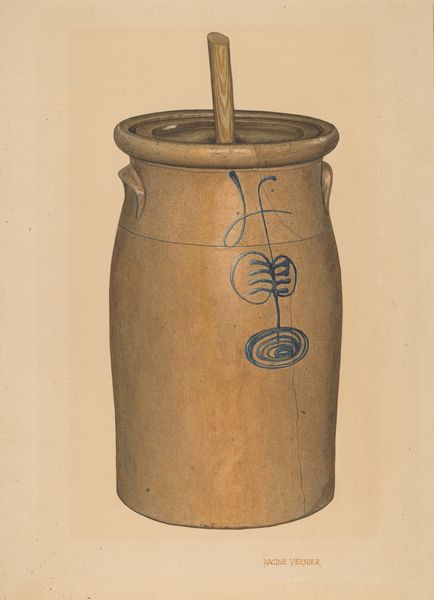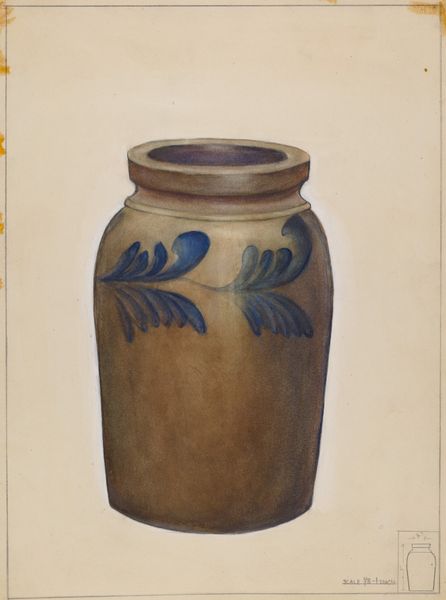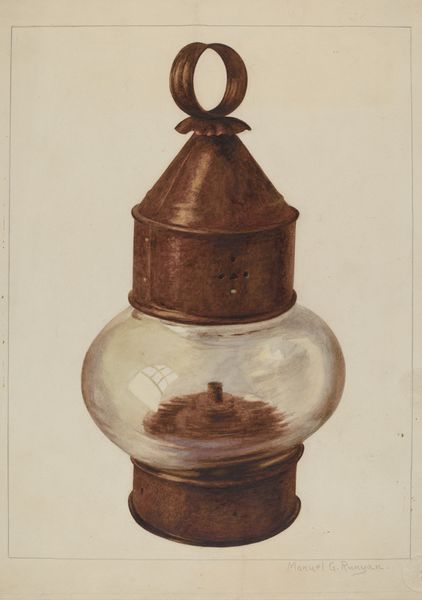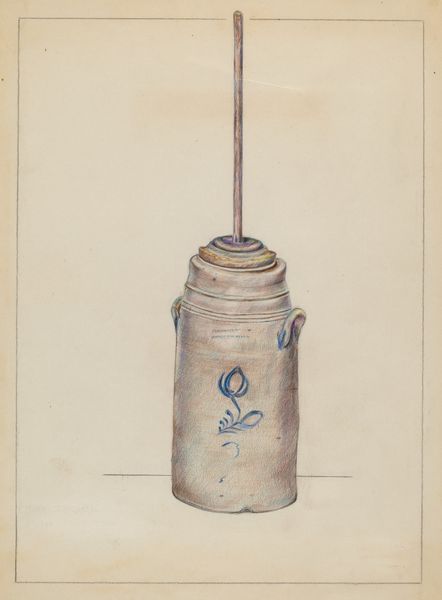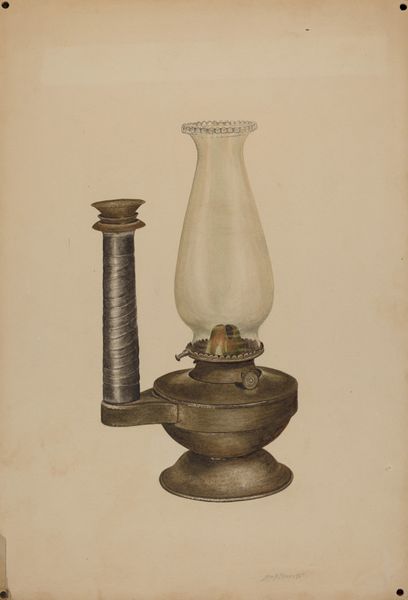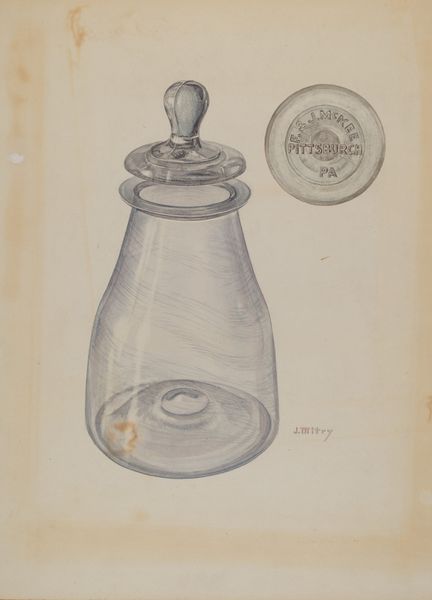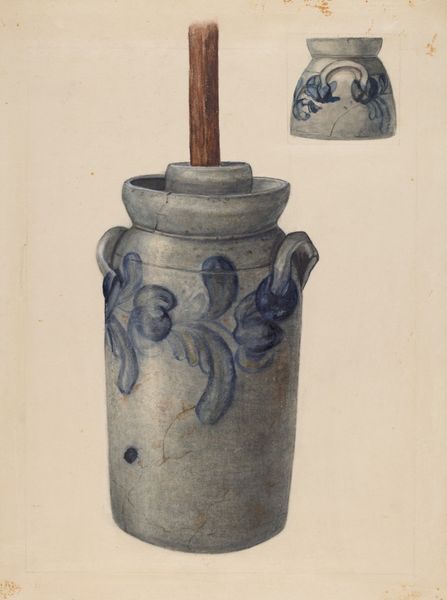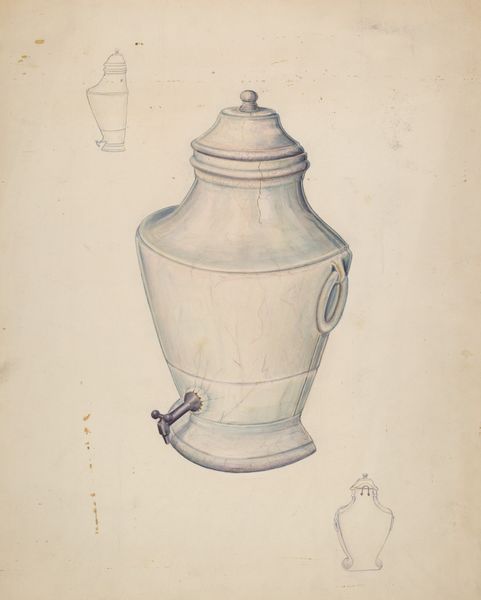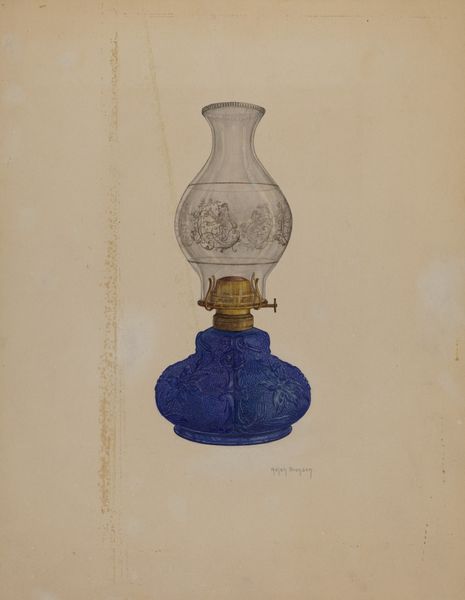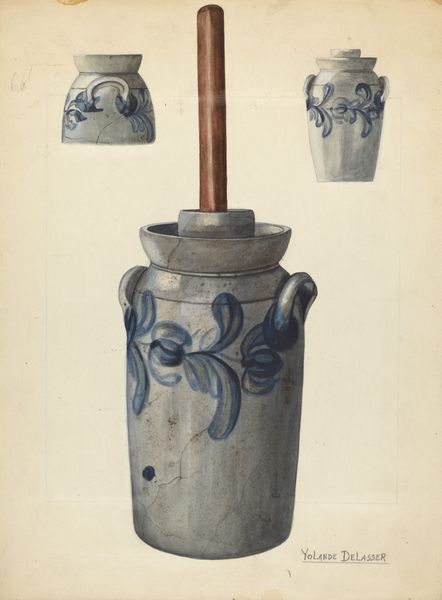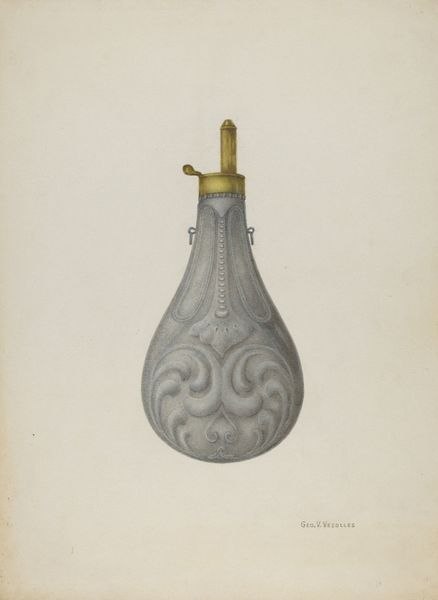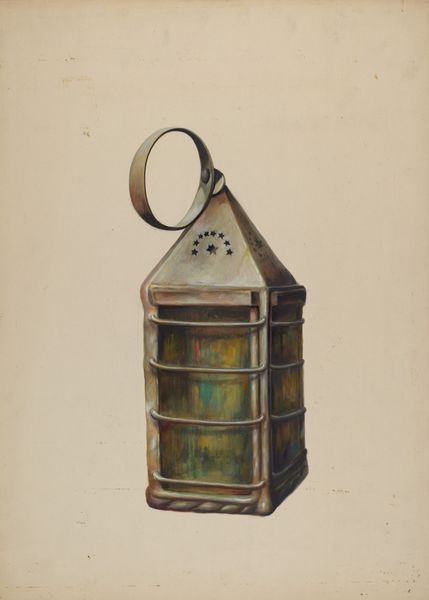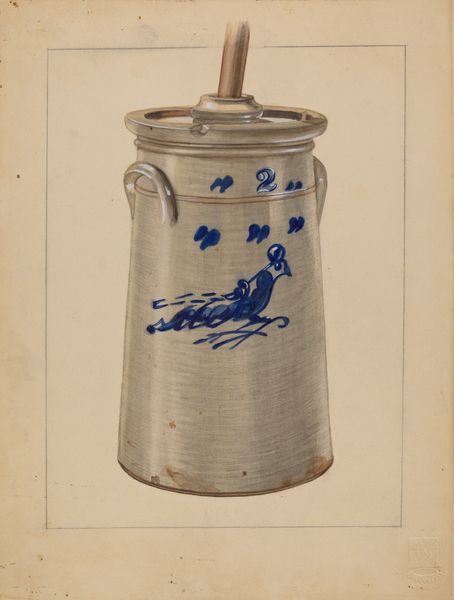
drawing, coloured-pencil
#
drawing
#
coloured-pencil
#
coloured pencil
#
watercolor
#
realism
Dimensions: overall: 29.9 x 22.9 cm (11 3/4 x 9 in.) Original IAD Object: 84.5 cm High 21.5 cm Wide
Copyright: National Gallery of Art: CC0 1.0
Samuel Sulkowitz made this drawing of a butter churn, using graphite and watercolor. The original churn itself would have been made of stoneware: an ideal material for containing food, because it is non-porous and can be easily cleaned. Stoneware is made by firing clay at a high temperature. Salt is often added to the kiln, creating a distinctive glazed surface. The potter throws the clay, building up the walls of the vessel, and then adds handles. This one is further decorated with a brushed cobalt design, typical of Pennsylvania churns. The churn is more than just a functional object. It is testament to the labor of those who made and used it. Turning cream into butter was a common household task in the 19th century, often performed by women. The churn, therefore, becomes a symbol of domesticity and rural life, which Sulkowitz has preserved in this drawing. Paying close attention to materials and making helps us appreciate the social and cultural significance of everyday objects.
Comments
No comments
Be the first to comment and join the conversation on the ultimate creative platform.
